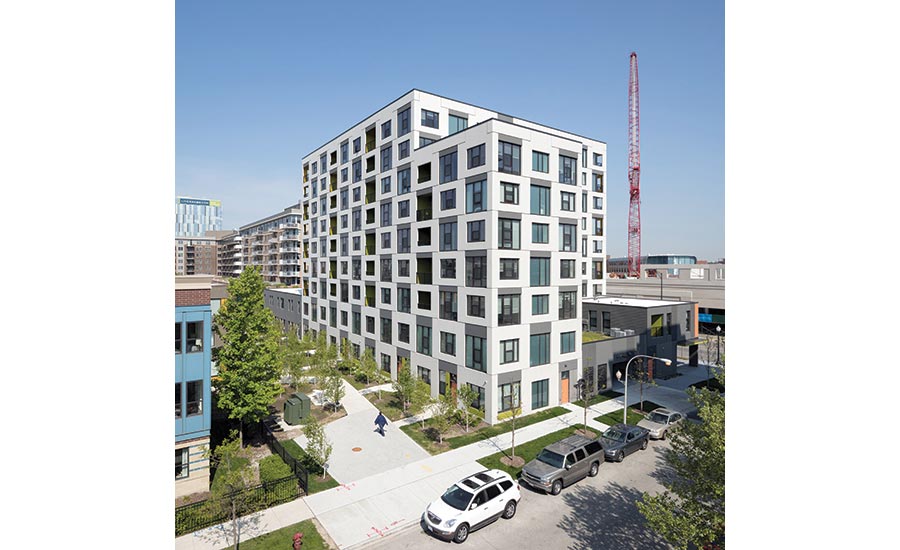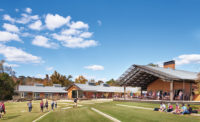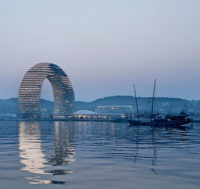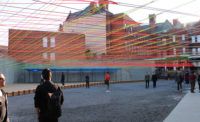Chicago’s public housing has undergone drastic changes in the past two decades. With a sweeping urban policy implemented in 2000, its grim, isolated towers were razed and replaced by a new model: tidy rows of townhouses and smaller apartment complexes that mix tenants of varied income levels. The North Side neighborhood where the troubled former Cabrini-Green apartment towers stood—once home to 15,000 public housing residents—has undergone a particularly radical transformation.
A good example of the new housing type is the mixed-income apartment complex by local firm Landon Bone Baker Architects (LBBA). It seeks to foster community ties, enliven the street, and eschew design conventions that typify—and stigmatize— affordable housing. “Over the years we’ve come to understand that public housing is really just housing,” says firm principal Peter Landon.
The 178,000-square-foot project—one phase of a greater development called Parkside of Old Town, by local developer Holsten—consists of a mid-rise, precastconcrete structure on West Division Street and a separate three-story building of townhouses to its south. Out of the total 106 rental units, 27 are affordable and 36 are subsidized further for the displaced Cabrini- Green residents. The $31 million project was funded through a mix of tax credits and TIF subsidies, as well as funds from the city’s housing authority, among other sources.
To create a sense of permeability at the base of the larger building, LBBA oriented communal spaces such as a fitness center and community room toward West Division Street. The space between the two rectangular buildings functions as both a circulation route and space for outdoor activities like cookouts. For visual rhythm, the building’s checkerboard-like facade is punctuated with splashes of color painted in recessed balconies.
Heeding conversations with former Cabrini-Green residents and a local advisory council, LBBA incorporated a mix of apartment sizes—from the townhouses to onebedroom units—to accommodate everyone from multigenerational families to singles. Crucially, there is no difference in the design of the lower-rate units: generous windows frame views of the Chicago skyline, and finishes, like vinyl plank flooring, that are cost-effective but not institutional-looking.
Since the building opened last year, all of the units, including market-rate ones, have been rented, evidence of the extreme demand that remains for dignified public housing. The success of this award-winning project is due in part to the persistence of the former Cabrini-Green residents in pushing for better housing and the commitment of the architecture firm, which is building more of this type. “There was a competition back in 1996 for Cabrini-Green, and we met with residents and activists once a week for a few months,” Landon remembers. “Amazingly enough, they are still there—and we are too.”






